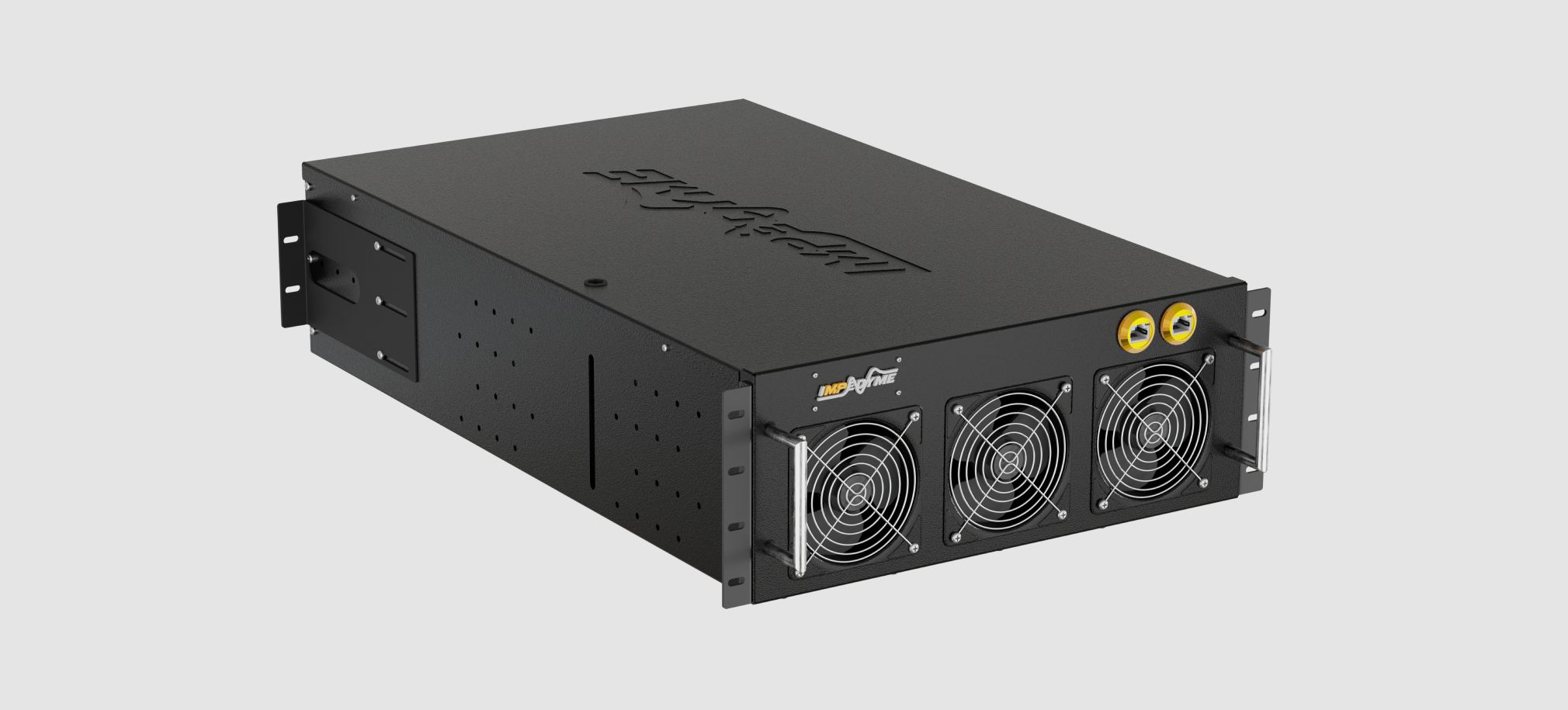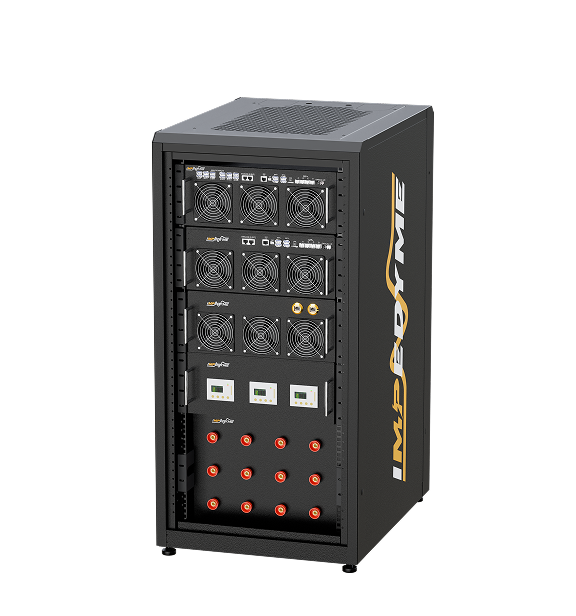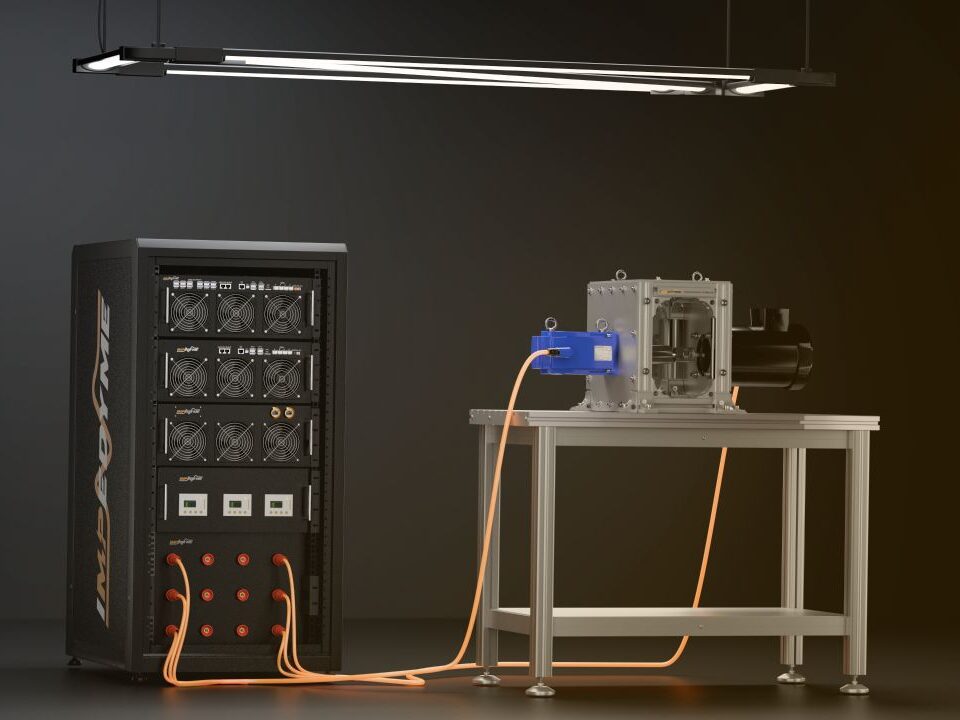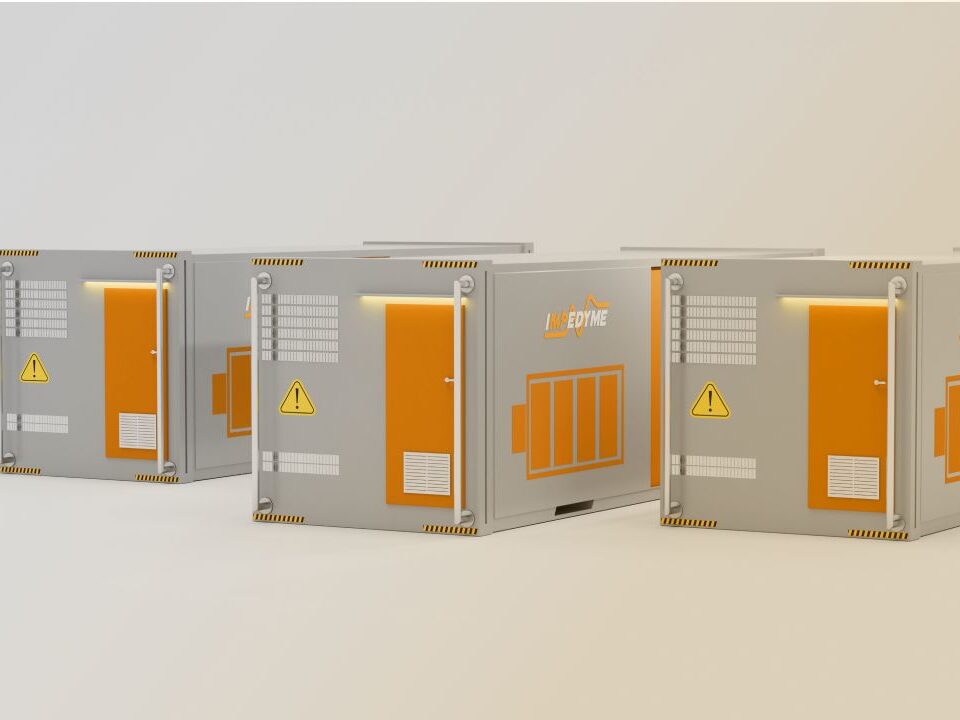
-
 Induction Motor
Induction Motor
-
 Automotive Electrical System Simulation
Automotive Electrical System Simulation
-
 DC/DC Bidirectional Converter
DC/DC Bidirectional Converter
-
 PWM Control for Brushless DC
PWM Control for Brushless DC
-
 BLDC Motor Control and Drive Simulation
BLDC Motor Control and Drive Simulation
-
 Electric Vehicle Fast Charger Simulation
Electric Vehicle Fast Charger Simulation
-
 DFIG Wind Turbine Simulation
DFIG Wind Turbine Simulation
-
 Dual Active Bridge
Dual Active Bridge
-
 EV Dynamometer Test Environment Simulation
EV Dynamometer Test Environment Simulation
-
 Electric Vehicle Simulation
Electric Vehicle Simulation
-
 Three-Phase Grid-Connected Inverter Using Direct-Q…
Three-Phase Grid-Connected Inverter Using Direct-Q…
-
 Three-Phase Grid-Connected Solar Photovoltaic
Three-Phase Grid-Connected Solar Photovoltaic
-
 Grid-Connected Rectifier
Grid-Connected Rectifier
-
 Grid-Tied Inverter System
Grid-Tied Inverter System
-
 Torque Control in a Hybrid Excitation Synchronous …
Torque Control in a Hybrid Excitation Synchronous …
-
 Wye-Delta Starting Circuit
Wye-Delta Starting Circuit
-
 IPMSM-Based Axle-Drive
IPMSM-Based Axle-Drive
-
 Simplified Parallel Hybrid Electric Vehicle
Simplified Parallel Hybrid Electric Vehicle
-
 Simplified Series Hybrid Electric Vehicle
Simplified Series Hybrid Electric Vehicle
-
 Series-Parallel Hybrid Electric Vehicle
Series-Parallel Hybrid Electric Vehicle
-
 Three-Phase Matrix Converter Simulation
Three-Phase Matrix Converter Simulation
-
 Venturini Modulation for Three-Phase Matrix Conver…
Venturini Modulation for Three-Phase Matrix Conver…
-
 Microgrid Frequency Regulation Using Vehicle-to-Gr…
Microgrid Frequency Regulation Using Vehicle-to-Gr…
-
 Three-Phase Modular Multilevel Converter
Three-Phase Modular Multilevel Converter
-
 Field-Oriented Control
Field-Oriented Control
-
 Interior Permanent Magnet Synchronous Generator
Interior Permanent Magnet Synchronous Generator
-
 Permanent Magnet Synchronous Machine
Permanent Magnet Synchronous Machine
-
 PMSM Rotor Angular Velocity
PMSM Rotor Angular Velocity
-
 PMSM-Based Electrical Traction Drive
PMSM-Based Electrical Traction Drive
-
 Maximum Power Point Tracking
Maximum Power Point Tracking
-
 Six-Phase Permanent Magnet Synchronous Machine
Six-Phase Permanent Magnet Synchronous Machine
-
 Synchronous Machine-Based Electrical Drive Simulat…
Synchronous Machine-Based Electrical Drive Simulat…
-
 Single-Stage Solar Inverter
Single-Stage Solar Inverter
-
 Three-Phase Cycloconverter Simulation
Three-Phase Cycloconverter Simulation
-
 Totem-Pole PFC Simulation
Totem-Pole PFC Simulation
-
 Twelve-Pulse Thyristor Rectifier
Twelve-Pulse Thyristor Rectifier
-
 Two-Wheeler On-Board Charger
Two-Wheeler On-Board Charger
-
 Vienna Rectifier Simulation
Vienna Rectifier Simulation
-
 High-Voltage Direct Current
High-Voltage Direct Current
-
 Wireless Power Transfer
Wireless Power Transfer

Comprehensive Documentation for Totem-Pole PFC Simulation
Table of Contents
- 1 Comprehensive Documentation for Totem-Pole PFC Simulation
- 1.1 Introduction
- 1.2 System Overview
- 1.2.1 What is a Totem-Pole PFC?
- 1.2.2 Purpose of the Simulation
- 1.3 Key Features
- 1.3.1 High-Efficiency Operation
- 1.3.2 Reduced Total Harmonic Distortion (THD)
- 1.3.3 Fast-Switching GaN/SiC Devices
- 1.4 Simulation Objectives
- 1.5 Technical Description
- 1.5.1 System Configuration
- 1.5.2 Control Methodology
- 1.6 Advantages of Totem-Pole PFC
- 1.7 Applications
- 1.8 Simulation Benefits
- 1.9 Summary
- 1.10 Future Enhancement
- 1.10.1 Induction Motor
- 1.10.2 Automotive Electrical System Simulation
- 1.10.3 DC/DC Bidirectional Converter
- 1.10.4 PWM Control for Brushless DC
Introduction
The Totem-Pole Power Factor Correction (PFC) Simulation is a detailed model designed to demonstrate an advanced AC-DC power conversion technique that enhances efficiency and power quality. This topology eliminates the need for bulky diodes by leveraging fast-switching transistors, making it ideal for high-efficiency power supplies. The simulation is crucial for modern power transmission applications, ensuring compliance with power quality regulations while optimizing performance and cost.

System Overview
What is a Totem-Pole PFC?
A Totem-Pole PFC is a bridgeless power factor correction circuit that uses a bidirectional switch structure to achieve near-unity power factor while minimizing conduction losses. It typically employs gallium nitride (GaN) or silicon carbide (SiC) transistors to operate at high frequencies, reducing size and improving efficiency.
Purpose of the Simulation
The simulation aims to:
- Demonstrate the working principles of a Totem-Pole PFC.
- Validate power factor correction and efficiency improvements.
- Analyze switching performance and thermal behavior.
Key Features
High-Efficiency Operation
The totem-pole topology eliminates diode bridge losses, significantly improving conversion efficiency. ➡️ HIL/PHIL Benefit: Real-time testing allows efficiency validation under varying input conditions and loads.
Reduced Total Harmonic Distortion (THD)
By implementing advanced control techniques, the PFC ensures low harmonic distortion in input current. ➡️ HIL/PHIL Benefit: The system can be tested under different grid conditions to verify compliance with power quality standards.
Fast-Switching GaN/SiC Devices
The use of wide-bandgap semiconductors allows high-frequency operation, reducing passive component size. ➡️ HIL/PHIL Benefit: Dynamic performance testing under real-world conditions helps optimize switching strategies for minimal losses.
Simulation Objectives
This simulation helps evaluate:
- Power factor correction effectiveness.
- Conversion efficiency and thermal performance.
- Control strategy optimization.
- Grid compatibility and transient response. ➡️ HIL/PHIL Benefit: These evaluations transition smoothly from simulation to real hardware testing, ensuring practical implementation feasibility.
Technical Description
System Configuration
- Input: AC mains (single-phase or three-phase depending on application).
- Output: DC bus voltage for downstream converters or loads.
- Power Stage: Totem-pole arrangement with GaN/SiC transistors and low-frequency diodes.
Control Methodology
- Continuous conduction mode (CCM) operation for high efficiency.
- Digital control using predictive current control or average current mode control. ➡️ HIL/PHIL Benefit: The control logic can be tested and optimized using Impedyme’s HIL platform before hardware deployment.
Advantages of Totem-Pole PFC
- High Efficiency: Lower conduction losses compared to traditional PFC circuits.
- Compact Design: Reduced component count and size due to high-frequency operation.
- Better Power Quality: Near-unity power factor with minimal THD. ➡️ HIL/PHIL Benefit: Each of these features can be validated across the full development cycle (RCP → HIL → PHIL) using Impedyme’s platforms.
- Reverse Power flow Ability
- It might have leading Power factor so it can act as a compensator
Applications
- Server Power Supplies: High-efficiency rectifiers for data centers.
- Electric Vehicle Chargers: Optimized AC-DC conversion for onboard and offboard chargers.
- Renewable Energy Systems: Grid-interfacing converters for solar and wind applications. ➡️ HIL/PHIL Benefit: Real-time emulation and testing accelerate the development of tailored solutions for each application.
- Telecommunications: Enhancing the efficiency of power supplies in telecom equipment, ensuring reliable and uninterrupted communication services.
- Consumer Electronics: Increasing the efficiency of power supplies in consumer electronics, such as televisions, computers, and gaming consoles.
- Aerospace and Defense: Improving the efficiency and reliability of power supplies in aerospace and defense applications, ensuring mission-critical systems operate effectively.
- Medical Equipment: Enhancing the performance and efficiency of power supplies in medical devices, ensuring reliable operation and reducing energy consumption.
Simulation Benefits
With this simulation, users can:
- Analyze the dynamic response of the PFC circuit.
- Test advanced control algorithms.
- Evaluate efficiency under varying loads.
- Ensure compliance with grid power quality standards. ➡️ HIL/PHIL Benefit: These insights translate directly to hardware using Impedyme’s PHIL, ensuring the real device meets design specifications.
Summary
The Totem-Pole PFC Simulation showcases a high-efficiency AC-DC conversion approach that significantly enhances power factor correction while minimizing losses. By integrating Impedyme’s HIL and PHIL solutions, the entire development workflow is optimized:
| Development Stage | Impedyme’s Contribution |
|---|---|
| Control Design | RCP using HIL for rapid algorithm validation |
| Control Hardware Testing | CIL with real-time PFC models |
| Power Stage Verification | PHIL with real voltage and power interaction |
| Final Validation | Full-system PHIL under realistic grid and load conditions |
Future Enhancement
- Integration of advanced digital control techniques.
- Compliance testing with evolving power quality standards.
- Fault-tolerant operation and grid synchronization strategies.
- Integration with renewable energy storage and microgrid applications.
The combination of a Totem-Pole PFC Simulation with Impedyme’s HIL/PHIL platforms ensures a streamlined development process—from concept validation to real-world implementation. This approach enables faster deployment, reduced design risks, and improved reliability for next-generation power conversion systems.






